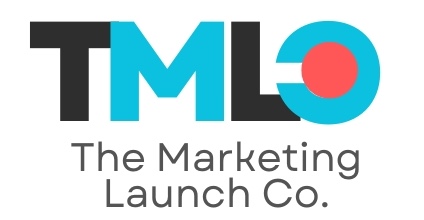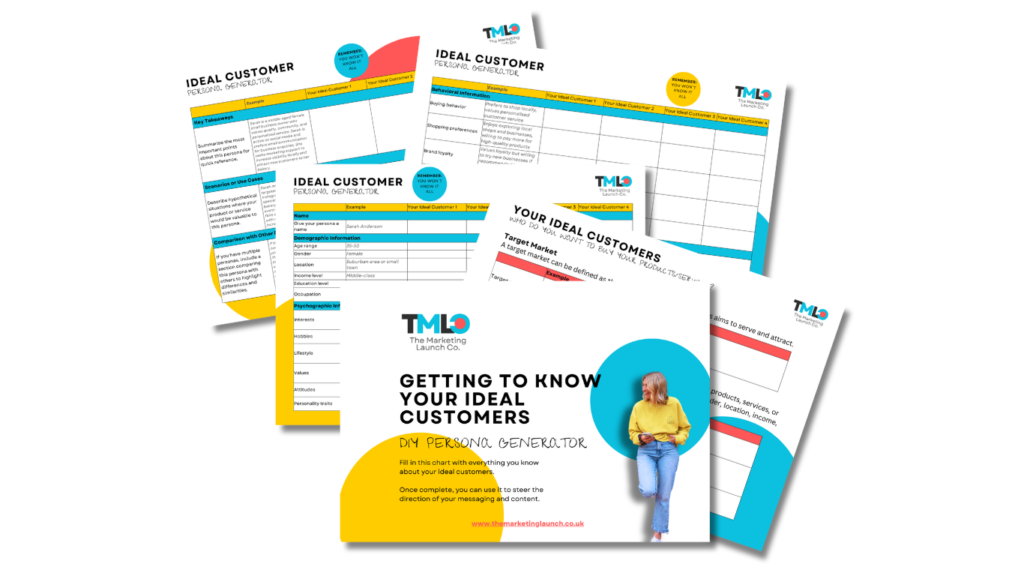The journey to running a small business from inception to growth is often fraught with challenges. You probably have a brilliant product or service, but without a comprehensive understanding of your target audience, achieving sustainable growth can be an uphill battle.
Identifying and understanding your target audience lays the foundation for strategic business decisions, effective marketing, and the overall success of your venture.
1. Define your Ideal Customer.
Before delving into any marketing strategy, it’s imperative to clearly define your ideal customer. Consider their demographics, such as age, gender, location, and income level, as well as their psychographics, which encompass their values, interests, and behaviors. Creating buyer personas can help you visualise and understand the needs and preferences of your potential customers.
Get to know your ideal audience:
- Demographics = age, gender, location, income, occupation
- Age
- Gender
- Location
- Income level
- Education level
- Occupation
- Psychographics = characteristics and traits such as values, desires, goals, interests, and lifestyle choices
- Interests
- Values
- Attitudes
- Lifestyle
- Hobbies
- Personality traits
- Needs and Pain Points:
- What problems or challenges are my ideal customers currently facing in their lives or businesses? Eg time, money, overwhelm.
- What are the primary goals and objectives of my ideal customers? Eg money, health, career, work-life balance
- What frustrations or obstacles do my ideal customers encounter when trying to achieve their goals?
- How do my ideal customers currently address or attempt to solve their problems?
- What are the common misconceptions or concerns my ideal customers have about products or services similar to mine?
- What would make my ideal customers’ experiences with my business more enjoyable, convenient, or valuable?
- Communication Preferences
- Do they prefer email, social media, phone calls, in-person interactions, or a combination of these?
- Buying Behaviour = how do they buy products & services.
- How do they make purchasing decisions?
- What factors influence their buying choices?
💡TIP: Why not save all your audience knowledge into a handy factsheet to print out and refer back to whenever you need it. I’ve got one you can download here.
2. Research.
In the growth stage, it’s crucial to conduct comprehensive market research to gain insights into industry trends, consumer behaviour, and competitor strategies. By analysing your competitors’ customer base and understanding their strengths and weaknesses, you can carve out a unique value proposition that resonates with your target audience.
Research Ideas:
- Polls on social media. These are super quick engaging ways to get your audience talking.
- Online surveys with Google forms or Survey Monkey. Discounts, freebies, or early access to deals can sweeten the deal and get them talking.
- Dive into Google Analytics to see who’s checking out your website. You can learn a lot from where they’re coming from, what pages they’re into, and where they’re bouncing.
- Social Media insights. See who’s following you and what they’re chatting about. Likes, comments, and shares can give you a clue about what makes your audience tick.
- Chat with prospects and customers. Ask them what they love about your biz and where you could do better. People love to talk, especially when you’re asking them about themselves!
- Reviews. Check out what people are saying about your business on Google, Yelp, or Facebook. Their reviews can be a goldmine of feedback.
- Communities. Join some online (and face-to-face) groups where your audience or industry hang out. Listen in on the convos, ask questions, and get to know your audience better.
- Free market research reports. Just a quick google will bring loads up online. To get the lowdown on your industry and audience
- Keep an eye on those competitors. Check out their social media, website, and reviews to see what’s working for them
3. Adapt and Evolve.
The needs and preferences of your target audience may evolve over time, influenced by changes in the market, technology, or socio-economic factors. Stay attuned to these shifts and be prepared to adapt your strategies accordingly. By staying flexible and responsive to changing consumer demands, you can maintain a competitive edge and continue to develop long-term relationships with your growing customer base.
4. Measure.
Set clear and measurable goals that align with your understanding of the target audience. Track key performance indicators (KPIs) such as customer acquisition cost, customer lifetime value, conversion rates, and customer satisfaction. Regularly assess these metrics to evaluate the effectiveness of your strategies and identify areas for improvement.
Understanding your target audience is not merely about selling a product; it’s about creating meaningful connections and delivering solutions that address their specific needs and aspirations.
By prioritising this understanding in your growth strategy, you can build a strong foundation for long-term success and establish your small business as a trusted and customer-centric brand in the market.
Create your DIY Audience Factsheet
Easy-to-follow prompts to create your own personalised audience factsheet. PLUS Ideas for how to get to know your ideal customers (better). Complete it, print it out and stick it on the wall.



